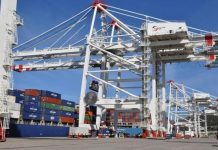The Silver economy (or the economy of senior citizens) in Morocco has the potential to grow by an average of nearly 7% per year until 2050, according to the Directorate of Studies and Financial Forecasts (DEPF) under the Ministry of Economy, Finance and Administration Reform.
“The Silver economy market, approached by the consumer spending of people aged 60 and over, represents about 53 billion dirhams (MMDH) in 2014 and would exceed 640 MMDH in 2050, that is to say a development potential of 7% on average per year”, estimates the DEPF in the second edition of its “Forward-looking Summary” devoted to the analysis of the potential of the Silver economy in Morocco.
Indeed, the Silver Economy appears as a high potential market estimated at 0.6 point of additional GDP per year, or the equivalent of 18 MMDH of added value each year, says the same source.
The DEPF notes, in this sense, that the exploitation of the potential offered by the Silver economy in Morocco requires the establishment of an ecosystem able to ensure the organized and consistent involvement of all stakeholders of the economy.
Thus, an analysis of the various studies and experiences related to the development of the Silver Economy on an international scale, points to several strategic principles that should guide public action in order to achieve a functional ecosystem that includes a diversity of actors and sectors serving seniors.
It concerns developing a coherent and long-term vision framing the Silver economy, based on a model of care for the elderly focused on a multidimensional support that also integrates the market dimension, says the summary, noting that the said vision should include an identification of all actors, public and private stakeholders, their perimeters and their contributions as well as their organization, while being accompanied by a framework of governance and adequate coordination.
According to the DEPF, the regional dimension should be centered around this vision considering the socio-economic characteristics and needs of the elderly which differ from one region to another.
Il est aussi question de bien identifier les besoins des personnes âgées pour leur assurer une meilleure offre de services, souligne la même source, faisant savoir qu’il n’existe pas un marché de la Silver Économie mais plusieurs marchés en raison de la très forte hétérogénéité des cibles (selon l’âge, l’accès à l’activité et le revenu…).
It is also a question of identifying the needs of the elderly to ensure a better offer of services, highlights the same source, making clear that there isn’t a market of the Silver Economy but several markets due to the very strong heterogeneity of the targets (according to the age, the access to the activity and the income).
In this regard, the Silver economy creates interesting growth opportunities in certain sectors such as health, housing, home equipment, home assistance, and products with high technological content, but less so in others.
International experience in this field indicates the existence of several Silver Economy niches that offer opportunities on a national scale, such as integrated care, home automation, new portable technologies, connected health and senior tourism. Far from being a burden, the Silver Economy is increasingly seen as an undisputed sector of the future and a promise of additional growth and jobs.
It encompasses a multitude of economic activities linked to the production, consumption and trade of goods and services of interest to the elderly, as well as the direct and indirect effects of these activities.
Morocco is not excluded from the process of aging of the world population, as evidenced by the prospects of the Center for Demographic Studies and Research (CERED).
These forecasts indicate an expected increase in the proportion of people aged over 60 in the total population, which is expected to rise from 9.4% in 2014 to 23.2% by 2050. This means that the national economic activity would be considerably supported by the consumption of the said age category, provided that our country succeeds in exploring and pertinently exploiting the opportunities related to the Silver Economy.





